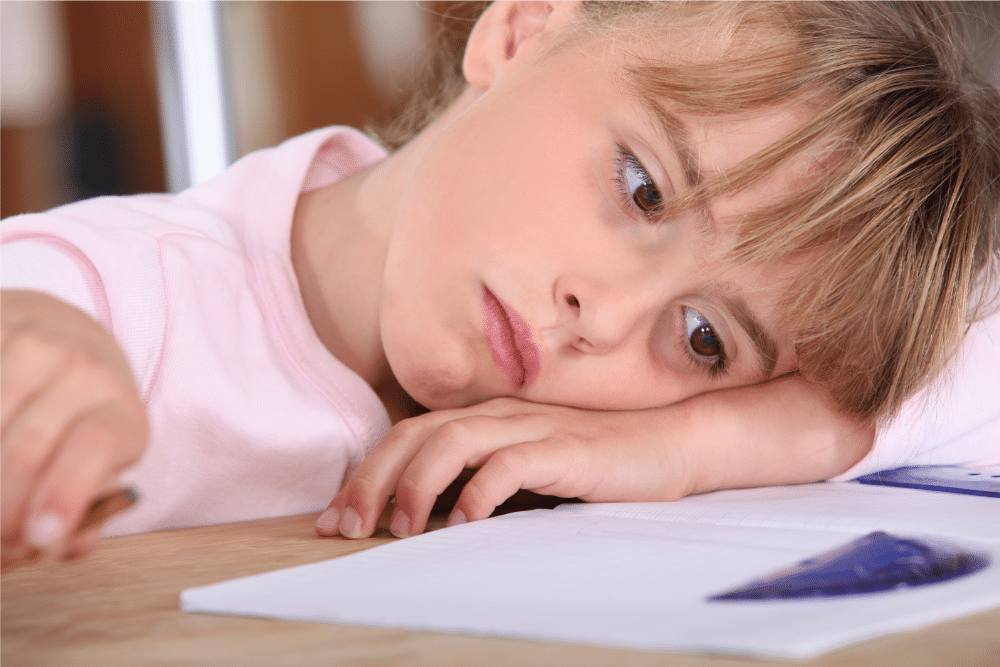Anxiety is a common reaction for children. Normal anxiety starts in infancy and peaks at specific times of development during early childhood. In most cases, children outgrow their anxiety as they grow older and become more aware and efficient at regulating their emotions. However, some children don’t outgrow their anxiety. Instead, they experience unique challenges that affect the way they learn, socialize, and develop into adults.
According to the Centers for Disease Prevention and Control, a little under 10 percent of children meet the clinical criteria for anxiety. A significant portion of those impacted by stress and anxiety is also at risk of depression, attention deficit disorder, and other comorbidities.
The good news is that there are some very effective treatment options and resources for parents to use to help their children overcome anxiety and become productive members of society.
Without treatment, the condition could worsen into a severe disorder that threatens both their physical and mental well-being. It’s important for parents to seek professional help for their children to minimize the impact of living with anxiety.
In addition to scheduling counseling, it’s beneficial to learn about childhood anxiety disorders and the best solution for treatment. But first, you must learn to recognize the difference between normal and abnormal anxiety symptoms.
What Are the Signs of Anxiety in Kids?
Anxiety generally causes excessive worrying and compulsive behavior in adults, but in children, it can trigger irritability, rebelliousness, and anger, in addition to the many symptoms experienced by adults. Because children manifest the signs of anxiety and other mood disorders differently than adults, it’s not always easy for parents to know when something is wrong with their child.
For example, when your child comes to you at bedtime complaining they can’t sleep because they’re scared or worried about something or someone under their bed, your first reaction may be to brush their concerns off or come up with ways to get them to sleep peacefully. That type of situation is normal and usually has no cause for alarm.
However, suppose your child’s reaction to bedtime seems out of character or more extreme. In that case, they might have a more severe type that meets the clinical diagnostic criteria for childhood anxiety disorders.
Childhood anxiety symptoms also include restlessness, poor concentration, memory problems, bedwetting, sleeping issues, separation issues, headaches, nausea, stomach pain, and irrational fears. Some children are asymptomatic or become more reserved about sharing their feelings with others. It can also cause disengagement from normal activities and behaviors.
If you have questions about whether your child’s behavior is normal or due to an anxiety disorder, it’s time to get a professional opinion.
What Are the Best Treatments for Children with Anxiety?
Among the first things you should do if you suspect your child has an anxiety disorder is to see a professional counselor for an evaluation of their emotional health and well-being. During the evaluation, a counselor interviews the child to learn about their parents and family members and their feelings and underlying dynamics toward them. Your child will be asked to explain their worries, anxieties, stressors, and fears in detail, so the counselor can determine the specific type of anxiety disorder the child has and recommend anti-anxiety medications, therapy, or both.
There are several types of therapy that are highly beneficial for children with anxiety. The type of therapy prescribed is based on the results of the child’s mental health assessment, their needs, and the counselor’s professional recommendations.
Cognitive Behavioral Therapy (CBT) generally lasts about 12 weeks, and it recognizes that well-being is influenced by what we think, what we feel, and the way we behave. Children learn to understand how to identify triggers and minimize their impact on their thoughts and behaviors. They also learn to rid themselves of negative thoughts and replace them with positive ones.
Acceptance and Commitment Therapy (ACT) makes use of techniques that involve acceptance and mindfulness, so children learn to live in the moment without judging themselves. This helps to cope with unwanted behaviors and thoughts and helps them distance themselves from sources of anxiety.
Dialectical Behavioral Therapy (DBT) emphasizes helping afflicted children increase their ability to handle stress and anxiety without overreacting. This type of therapy emphasizes personal accountability for their problems and encourages them to talk about anxiety and whatever intense feelings they may be experiencing.
What to Do If You Suspect Your Child Has Anxiety?
When dealing with children with suspected or known anxiety, it’s important for parents to avoid enabling their child’s fears by pushing them to become overly dependent on them. For instance, if you’re at an amusement park with your child, and they develop an unreasonable fear of having an accident on one of the rides, a parent’s response might typically be to stay by the child’s side to reassure them or push them to do an activity that is beyond their comfort level, both actions can have lingering and harmful effects on the child.
There is a fine line between enabling and fostering healthy independence in kids. Enablement may seem like a good idea because the assurance of parental protection helps lessen their fears. Still, too much hovering and overprotective parental behavior can be toxic to their overall health and development. It also reinforces their anxiety and can, in some cases, make things worse.
The best thing any parent can do is be supportive of their child by allowing them to face their anxieties and fears on their own and continuing to provide proper surveillance, encouragement, and guidance when necessary. It’s okay for them to get professional help for their kids.
To learn more about childhood anxiety or to have your child evaluated for treatment, contact the NeoPsych at (213) 616-5821.

